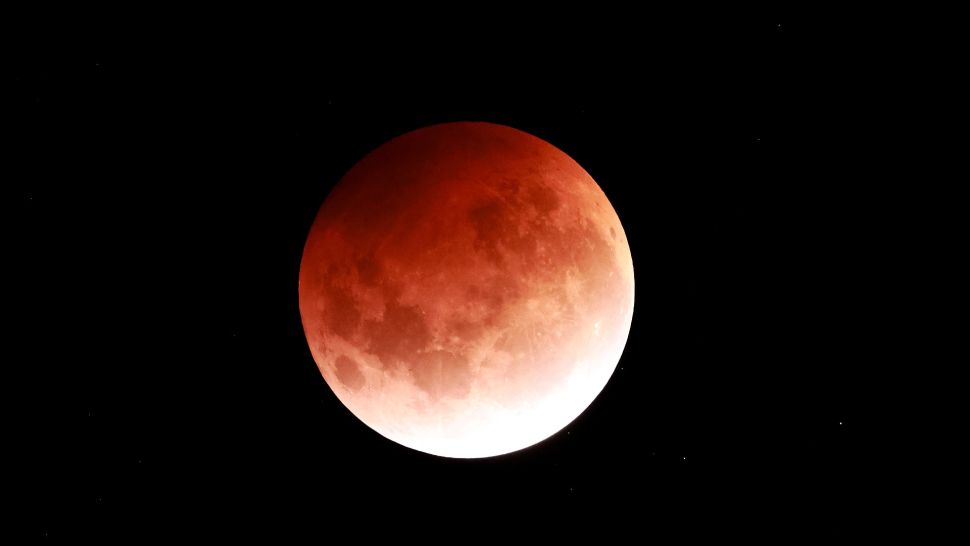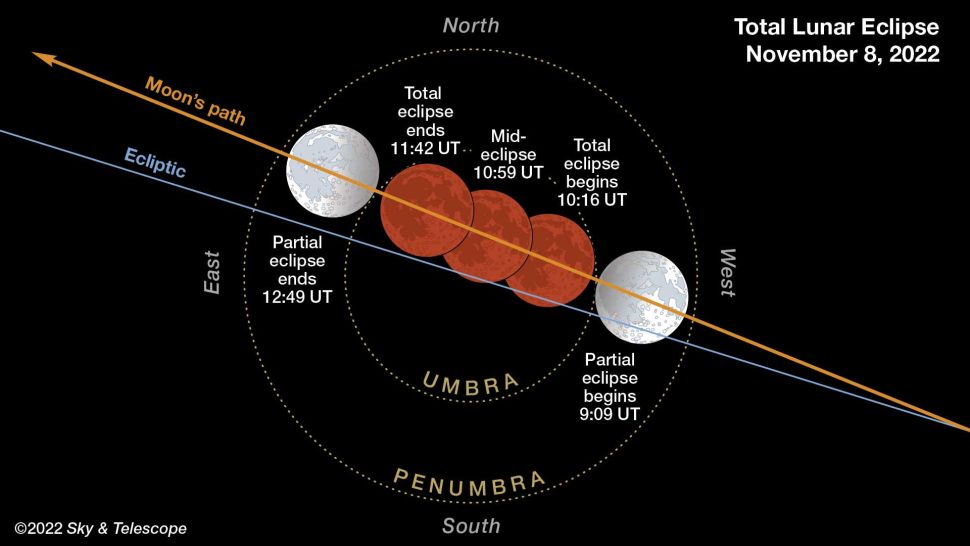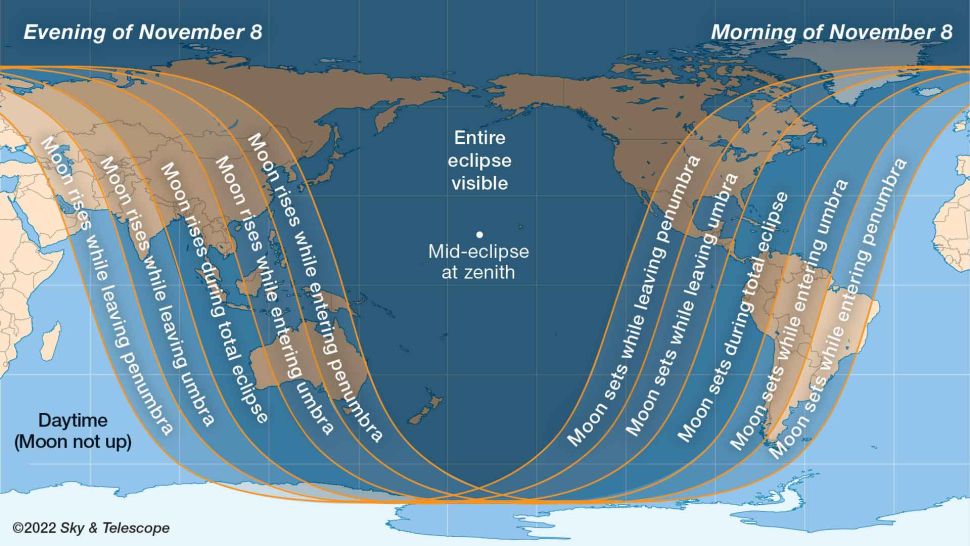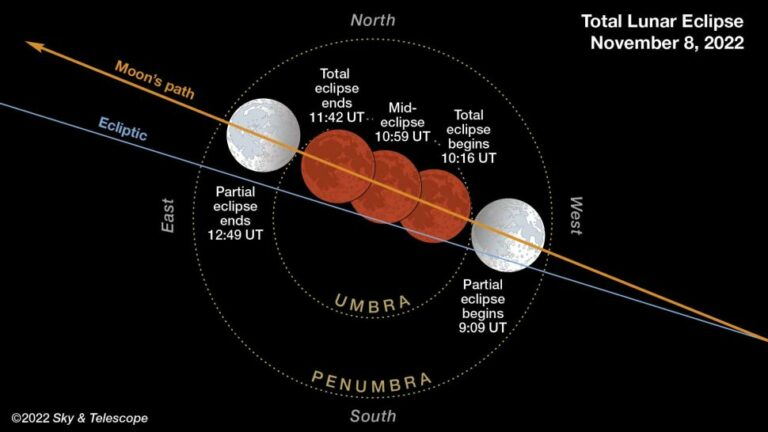Don’t miss November 8’s Beaver Blood Moon lunar eclipse.
The moon will pass through Earth’s shadow on Tuesday morning resulting in a total lunar eclipse.
On Tuesday, November 8, 2022, a complete lunar eclipse will be seen from Oceania, the Americas, Asia, and Northern Europe when the moon passes through the shadow of Earth.

The moon will reappear at at 7:49 a.m. EDT (1149 GMT), ending the eclipse, which will start at 4:10 a.m. EST (0810 GMT). However, the duration of the complete eclipse will be shorter, lasting from 5:17 a.m. EST (0917 GMT) until 6:42 a.m. EST (1042 GMT).
The moon seems less brilliant because sunlight cannot reach it since it is in Earth’s shadow. The moon’s disk will ultimately appear to be lighted indirectly by the sun as the eclipse progresses, yet some light still reaches the moon.
The moon may seem reddish red during the complete lunar eclipse as a result of sunlight striking its disk after being curved around the Earth by our planet’s atmosphere, which also blocks off blue light.
When the sun, the Earth, and the moon are all in a straight line with the Earth in the center and the moon in the other, a lunar eclipse will take place. Every full moon, or about once each month, the moon is on the side of the Earth opposite the sun.
The moon orbits the Earth at an angle of around five degrees with respect to the plane in which the Earth orbits the sun, thus the alignment of the three bodies isn’t precise. Despite this, eclipses don’t occur every month.
Lunar eclipses may be seen anyplace on Earth when the moon is above the horizon when they do occur two to three times a year. In contrast to solar eclipses, observers may safely stare straight during lunar eclipses.
The second and last lunar eclipse of the year will occur on Tuesday, November 8, 2022, with the first eclipse taking place on May 16.

How will the total lunar eclipse proceed?
Because the Earth’s shadow is divided into several sections, the moon’s appearance changes as the eclipse progresses.
The penumbra and umbra are the terms used to describe the two halves of the shadow cast by our planet. When the moon is in the umbra, a significantly darker region of our planet’s shadow, a total lunar eclipse occurs.
The moon will begin to fade on Tuesday around 3:03 a.m. EST (0803 GMT), when it first enters the outer shadow, or penumbra. It will reach the umbra, or inner shadow, of the Earth at about 4:10 a.m. EST (0810 GMT), when it will be partially obscured. As a result, a circular shadow moves over the moon’s disc. The complete eclipse begins when the moon is totally within the umbra at 5:17 a.m. EST (09:17 GMT).

When the moon has partially exited the umbra and is edging back into the penumbra, the complete eclipse is over, and the moon is once more partially obscured. The moon’s disk is covered by Earth’s shadow during this time.
The moon completely exits Earth’s inner shadow at 7:49 a.m. EST (1149 GMT), ending the partial eclipse. Around 8:56 a.m. EST, the moon then emerges from the penumbra (1256 GMT).
The following lunar eclipse—the first of 2023—will take place on May 6. This will be a penumbral eclipse, meaning that the moon’s disk will only be covered by the Earth’s outer, fainter shadow, making it potentially simple to miss.
Source:SpaceCom
Do not forget to share your opinion with us to provide you with the best posts !





0 Comments